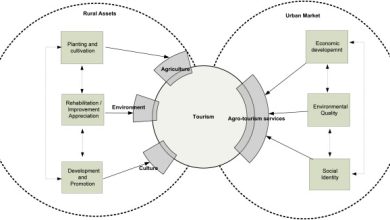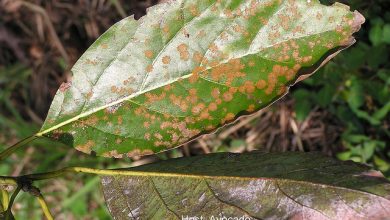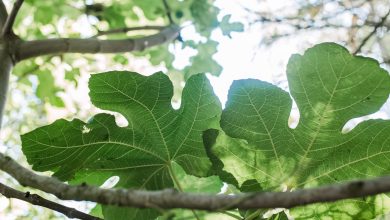Nigella sativa and Nigella damascena

In the Nigella group of plants we find two quite interesting species with medicinal and ornamental characteristics. They are the Nigella sativa and the Nigella damascena. They are two species that belong to the Ranunculaceae family and are known for their peculiar characteristics.
In this article we are going to tell you all the characteristics, cultivation and care of Nigella sativa and Nigella damascena.
Nigella sativa characteristics

This plant is commonly known by the name of false cumin, alien, black cumin, among others. What stands out the most about this herbaceous plant is that its seeds have medicinal characteristics. The properties of these seeds have been known for a long time and traditional medicine has been used. The Ranunculaceae family to which this plant belongs has more than 2,500 species.
It is an annual plant that we can see in full swing throughout the year. It has its origin in Asia, although today it is found in almost all areas of the Mediterranean in a naturalized way. One of the curiosities that this plant has is that it gives off a characteristic smell reminiscent of nutmeg. We can hardly see it in Spain unless we are interested in seeing it. However, in some Eastern countries it is found in greater abundance.
Nigella sativa cultivation

Its cultivation does not have special conditions or too much maintenance since it is a rustic plant. Generally prefers soils that are engorged and spongy and have a loamy or sandy texture. Normally it requires an extra application of water and a fertilizer during the flowering season to be able to develop more flowers and in good condition. This flowering time takes place between spring and early summer. It must be taken into account that the soil must have a pH, although it is not too determining since, given that it has a high level of rusticity, they are able to survive in limestone soils.
You have to give the care that is normally given to aromatic plants such as cumin. We can multiply this plant through seeds and extract all the essential oils full of medicinal properties. Although it is considered an aromatic herbaceous plant, we cannot discredit the ornamental potential of its flowers. Therefore, it is a plant that is considered to have several courses, both ornamental and medicinal.
Its flowers are white and quite showy. There are no leaves. When the plant is brushed or shaken, it gives off a smell that reminds us of nutmeg. Its seeds have properties that have been known since ancient times. It was used as a substitute for pepper, although it does not have the full potential of capsaicin. Its consumption should be moderate since it can be toxic in high concentrations. One of the most common symptoms that causes a high consumption of these seeds are vomiting and nausea. If consumed in moderation, it can facilitate digestion. It is also used to make breads and doughs in Germany.
Its medicinal properties include anti-inflammatory, antioxidant, aphrodisiac, antimicrobial, etc. It is also used to fight diabetes, cholesterol and reduce pain.
Characteristic of the Nigella damascena

This plant is of the annual type and usually grows in cultivated fields and in areas of stony pastures. It originates in southern Europe and in the Mediterranean region. In many parts of the world it is considered an ornamental plant. Its common name is known as Venus hair, spider, garden worm, among others.
It has very attractive flowers that usually develop in fields, meadows and on the edges of roads. It can be easily grown with almost no maintenance from seed. The flowers are of varied colors among which we find white, blue, pink, and light purple. The plant has a straight stem and usually reaches heights of between 60 and 70 centimeters.
Like Nigella sativa, they are rustic plants capable of withstanding periods of drought if they need too much care. This makes it an ideal plant for our garden. It was a very useful plant in gardening since it decorates with the beauty of its flowers and the capsules of the seeds are also decorative after they have dried.
Nigella Damascena cultivation

This plant is quite easy to grow and does not need too much care. It prefers limestone soils with good drainage and a good contribution of organic matter. For this, it is interesting to pay by adding compost preferably before sowing. Irrigation and keep it moderate throughout the year. Since it has great resistance to drought, we can use as an indicator that the substrates are drying to water again.
It can be reproduced through seeds in spring. Sometimes this plant tends to self-seed, so we should not pay too much attention to this plant if we want to multiply it. When this plant is grown directly in the ground, it has better results than when it is grown in a pot. It can be adapted to almost all types of climates. You just need a location in full sun and soil that is able to hold some moisture and has good drainage. The drainage is what helps the irrigation and rain water not be stored from the soil, causing the roots to rot.
It can also develop in clay soils rich in organic matter. Be careful with birds and with the effects of the sun. This plant is most vulnerable when it was finishing. Once the initial growth stage passed, we were already so vulnerable to birds and solar radiation. It does not resist frost, so the sowing time is better in spring.
Like Nigella sativa, Nigella Damascena also has medicinal properties. Among these properties are the treatment of various diseases related to the liver, the expulsion of gases, diarrhea and the promotion of menstruation in women. They must be taken with caution because high levels of consumption can become toxic.
I hope that with this information you can learn more about these two species of Nigella.




![Photo of [15] Plants in Danger of Extinction: Complete List and Description](https://www.complete-gardening.com/wp-content/uploads/2022/08/15-plants-in-danger-of-extinction-complete-list-and-description-390x220.jpg)